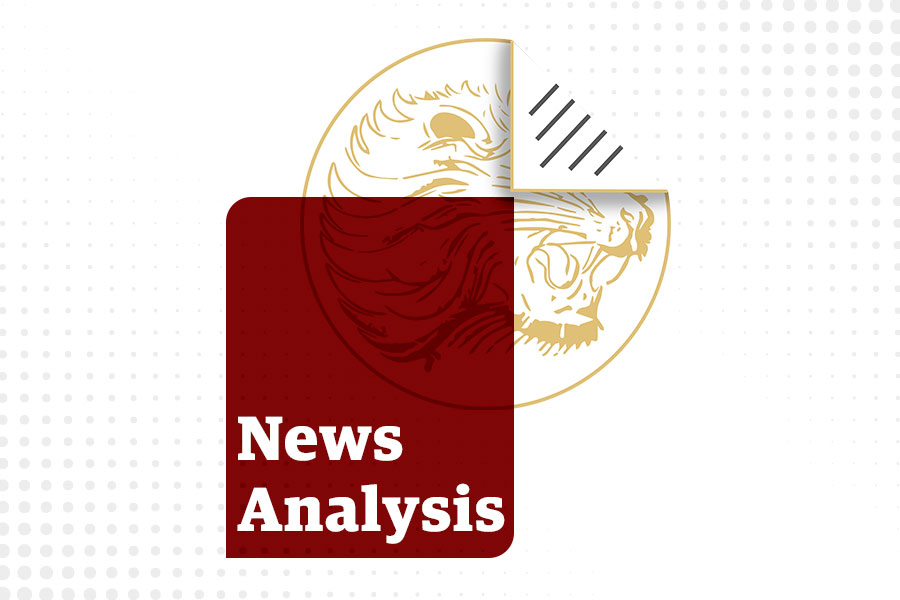
Fortune News | Feb 12,2022
Jul 25 , 2020
By GELILA SAMUEL ( FORTUNE STAFF WRITER
)
The federal government is set to establish an agency that will amass funds to be used as insurance payouts for depositors in times of financial crisis.
Drafted by the National Bank of Ethiopia (NBE), the regulation lays out a legal framework for the establishment of the Ethiopia Deposit Insurance Fund that will report to the central bank. The 19-page draft regulation states that the Fund will reimburse insured depositors during a crisis, dictate annual premiums, determine and regularly update the coverage limit for an insured deposit and collect premiums from financial institutions, development partners and the government.
The Fund will have a board comprised of the governor, vice governors and banking supervision director of the central bank, as well as its chief executive officer. Additional members will be appointed by the government.
The Governor of the central bank and the Minister of Finance will be the chairperson and deputy chairperson of the board of the Fund, respectively. The CEO and the deputy CEO will be appointed by the government with the recommendationfrom the central bank.
After the regulation is enacted, all members of financial institutions will sign a membership contract with the Fund and pay an initial premium, which will be determined by the Fund. The bill proposes the government put up 200 million Br as initial capital for the Fund.
It has not yet been decided how to define the government and the source of the initial capital from the government, according to a source close to the case.
“This is because the draft is going through a consultation process,” said this source.
The annual premium to be paid by financial institutions, which is subject to revision, is proposed to be 0.3pc of average bank deposits.
With a designed deposit insurance system, the new scheme aims to place troubled financial institutions in a safety net and avoid protections on ad-hoc terms, such as through restructuring a troubled bank or injecting capital, according to the source.
An example of implicit ad-hoc protection, the central bank had forwarded 57.5 billion Br of liquidity injections in four rounds to banks in the just ended fiscal year when banks were facing the most severe liquidity crunch in the industry's history.
In the event where there is a troubled bank or microfinance institution, the central bank will declare a revocation of the business license of the failed financial institution and the Fund will refund insured deposits.
The insurance coverage from the Fund, which will be paid to all depositors, is limited and covers the large majority of depositors but leaves a sustainable amount of deposits to market discipline. The limit of the coverage of the Fund will be proposed by the board, but it should not be less than 100,000 Br.
The Fund does not cover the deposits of capital goods leasing companies, other financial institutions and the government.
“It’s believed that these entities have their own safety net or can manage the loss,” said the source close to the case. “The focus of this scheme is for small depositors and SMEs.”
The Fund will cover the total amount of insurable deposits by summing up all insurable deposits in different accounts including the interest rate to the date of the occurrence of the event. The payout for depositors will be made within a three-month period after the occurrence of the crisis. However, even after 90 days, depositors can also claim their refunds within five years from the event of the trouble.
In the case of deposits in foreign currency, the troubled financial institution will present the parallel amount in Birr at the buying exchange rate on the date of the insurance event.
If there is an induced shortfall from the Fund to cover the insurable deposits, then the Fund has the privilege to request a bailout from the government. It can also request that member financial institutions pay advance premiums and can draw loans secured by the Fund’s assets or guarantees issued by the government.
This has been studied for a long time at the central bank, according to Alemseged Assefa, former vice governor of the central bank.
"This will buffer the existing defence including capital reserves and reserve requirements," he said.
Unlike reserve requirements at banks, the first line of defence that acts as a liquidity buffer for banks, the insurance fund is not a static pool of money but rather it is given the privilege to be used for capital investments. The resource can be used for investment including in government securities.
This initiative solidifies the financial sector, according to Asfaw Alemu, president of Dashen Bank.
"It'll also give the push for small depositors to take risks in investments," Asfaw said.
Total deposits at banks, both private and state-owned, reached 917.2 billion Br in the second quarter of the year, which is 97pc greater than the deposits mobilised by financial institutions. The 18 banks operate 6,023 branches, whereas the number of microfinance institutions has reached 38.
This will replace the existing measure of the central bank injecting liquidity into banks, said Atlaw Alemu (PhD), a macroeconomist and lecturer at Addis Abeba University's School of Business & Commerce.
"To some extent, it will guard against inflation, as the money isn't additional capital but has rather circulated in the economy," he said.
Regardless, it is the hand to hand effort of strict supervision and prudential regulation, financial institutions' resolution, deposit insurance and the central bank that cements the financial safety net, said the expert.
PUBLISHED ON
Jul 25,2020 [ VOL
21 , NO
1056]

Fortune News | Feb 12,2022

Fortune News | Apr 24,2021

News Analysis | Oct 30,2021

Radar | Jan 01,2023

Fortune News | Dec 17,2022

Fortune News | Mar 19,2022

Sponsored Contents | Jan 31,2022

Radar | Sep 22,2024

Radar | Jun 04,2022

Fortune News | Aug 13,2022

Dec 22 , 2024 . By TIZITA SHEWAFERAW
Charged with transforming colossal state-owned enterprises into modern and competitiv...

Aug 18 , 2024 . By AKSAH ITALO
Although predictable Yonas Zerihun's job in the ride-hailing service is not immune to...

Jul 28 , 2024 . By TIZITA SHEWAFERAW
Unhabitual, perhaps too many, Samuel Gebreyohannes, 38, used to occasionally enjoy a couple of beers at breakfast. However, he recently swit...

Jul 13 , 2024 . By AKSAH ITALO
Investors who rely on tractors, trucks, and field vehicles for commuting, transporting commodities, and f...

Oct 25 , 2025
The regulatory machinery is on overdrive. In only two years, no fewer than 35 new pro...

Oct 18 , 2025
The political establishment, notably the ruling party and its top brass, has become p...

Oct 11 , 2025
Ladislas Farago, a roving Associated Press (AP) correspondent, arrived in Ethiopia in...

Oct 4 , 2025
Eyob Tekalegn (PhD) had been in the Governor's chair for only weeks when, on Septembe...